We Can Fix it in the Mix
A look at the at-home studio spaces musicians are creating, enjoying or just making work for the time being.
Photo Essay by Riley Currie
Moose Almighty — Seattle, WA
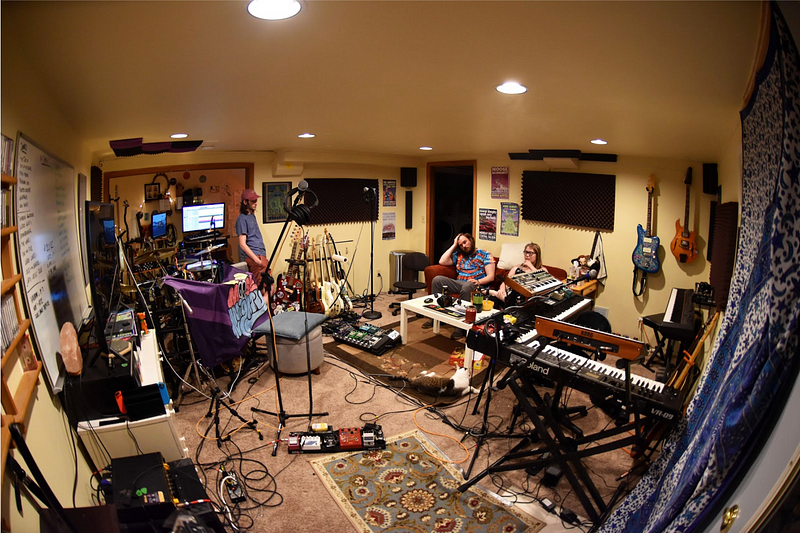
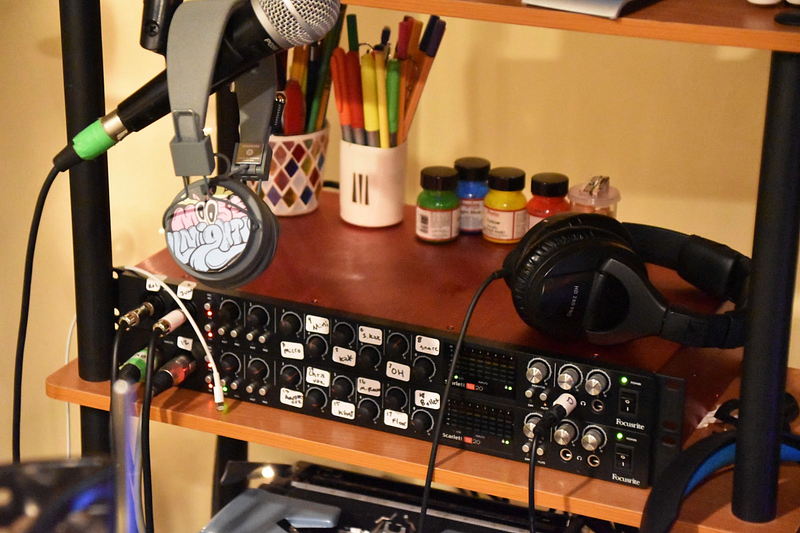
“When you’re an up and coming band, it’s vitally important that you learn to do things yourself and embrace that DIY ethic. You are your best resource, so learning how to record at home, promote shows yourself, find new fans, improve your musical abilities, it really all comes down to you.”
Seattle band Moose Almighty has plenty of experience embracing a DIY ethic. As the engineer of the space, drummer and audio engineer Kevin Shoop prioritized the placement of each microphone and instrument. According to Shoop, those placement decisions have the greatest impact on the overall sound.
Despite limited space, Shoop believes the most important thing is to level all the instruments and make sure each member of the band has a comfortable mix feeding into their headphones. The beer fridge, of course, is also essential.
Harbor Day — York Neighborhood, Bellingham, WA
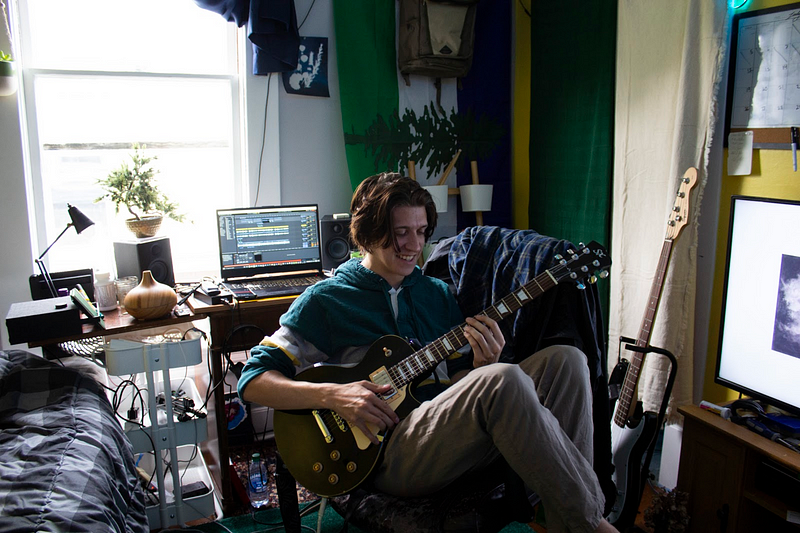
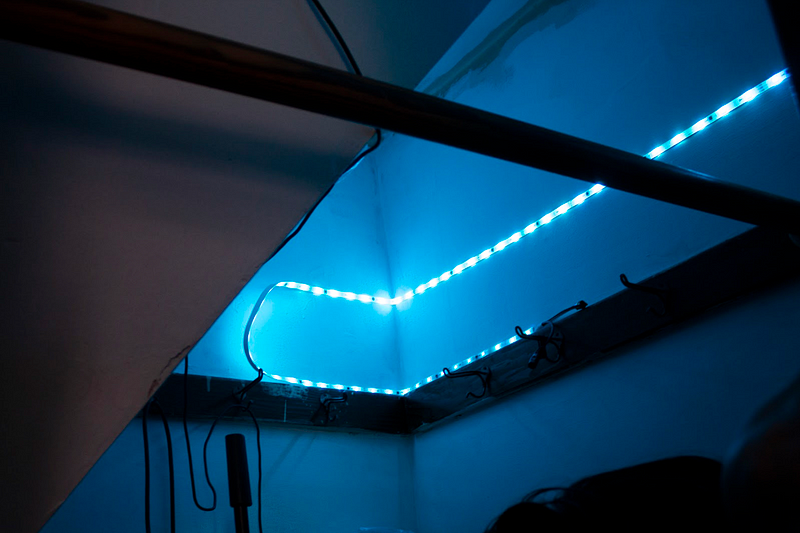
“I try to keep everything within reach.”
Austin Colwell has been recording music as Harbor Day since 2018. He recently repurposed string lights from a house show venue he was involved with by installing them in the back corner of his closet, which serves as a makeshift recording booth.
The lights change color along with the music playing, which makes for an interesting recording process, according to Colwell.
His usual routine involves ordering food (on the day these photos were taken, it was a pizza), blocking out distractions and working on writing and recording music for long stretches of time.
Adam Perkowski — Columbia Neighborhood, Bellingham, WA
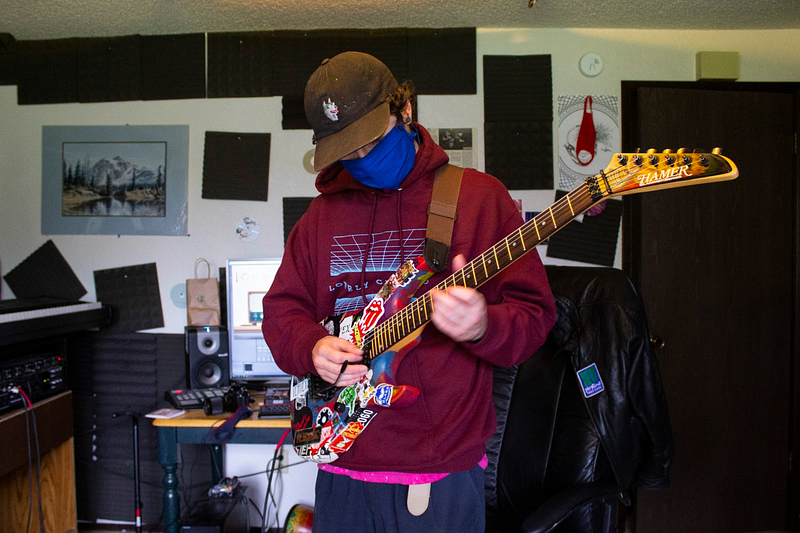
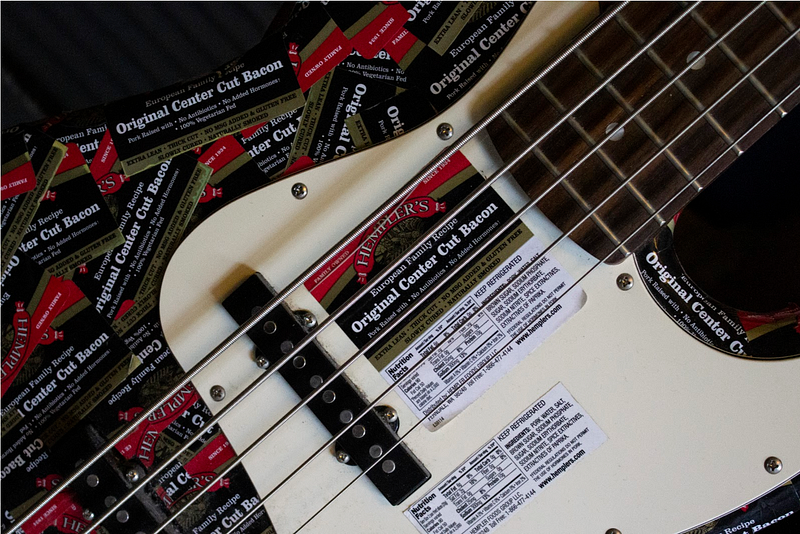
“I’ve been collecting gear since I was 12 — it’s the pot I put everything into, every birthday and Christmas.”
Adam Perkowski is a guitarist and bassist in the Bellingham band Teo and the Cosmic Neighborhood. He’s had the same guitar — decked out in about a decade’s worth of paint and stickers — since he started playing at age 12. He’s recently started recording directly into his computer, a process that makes at-home recording much easier.
His current setup includes a plugin created by Cory Wong of Vulfpeck, which includes a mix of tones and effects inspired by Wong’s signature guitar sound.
Dirteater Productions — Happy Valley Neighborhood, Bellingham, WA
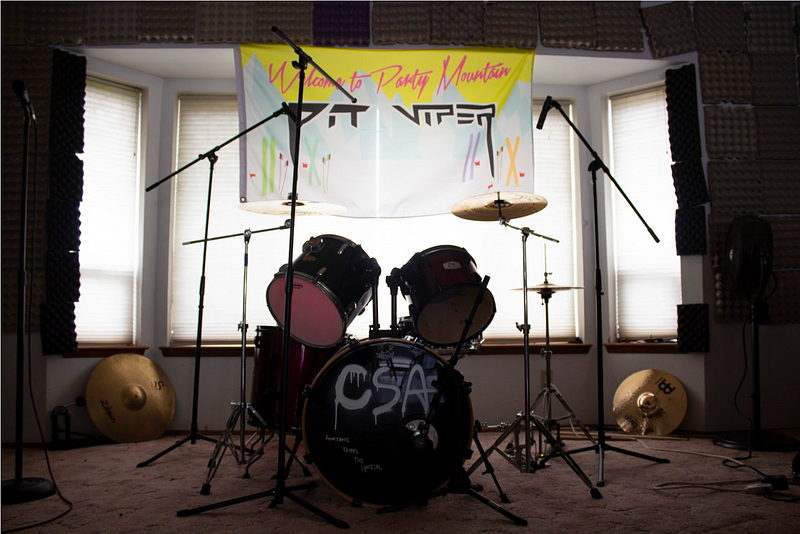
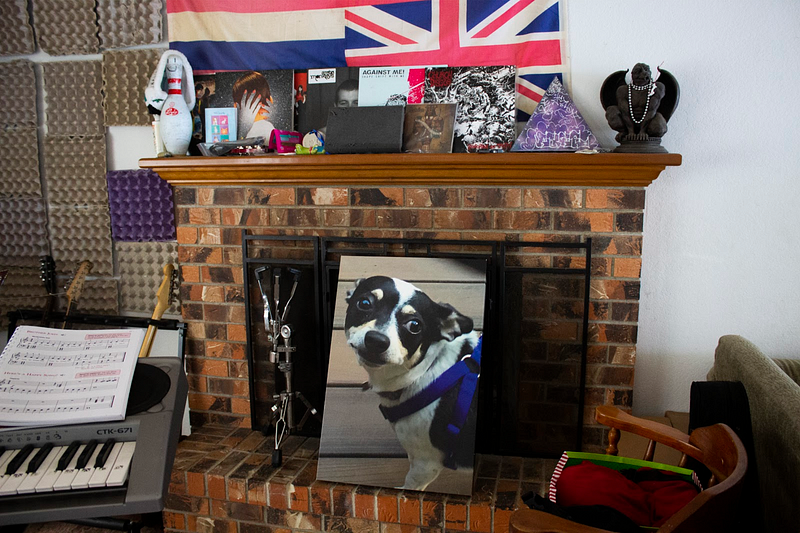
“Microphones are the biggest game changer. Especially with metal and punk, the kick drum is something you really want to ring out.”
Keanu Franco records metal and punk bands in his living room under the moniker Dirteater Productions. The space has been completely converted into a studio. He started recording music two years ago, with a little Blue Snowball microphone. About a year ago, he opened up the space to other artists.
Whether or not egg cartons absorb sound while recording is up for debate, but Franco says they do make his landlord feel better.
Bathrobe Records — Pearl District, Portland, OR
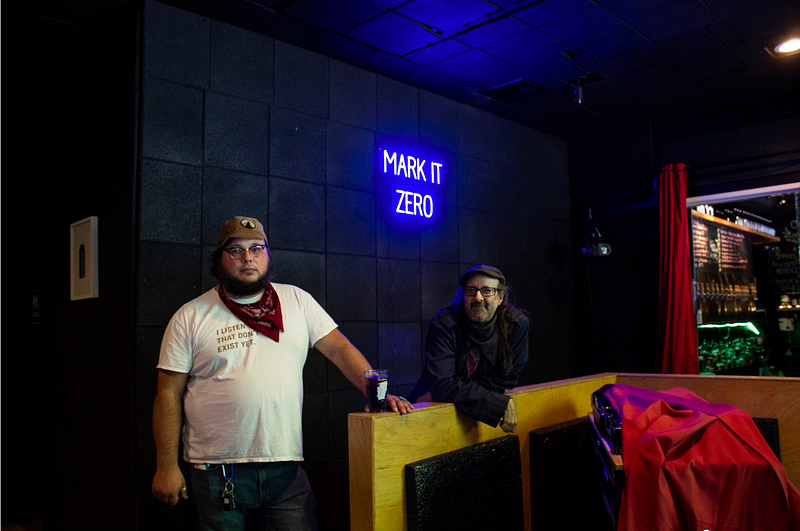
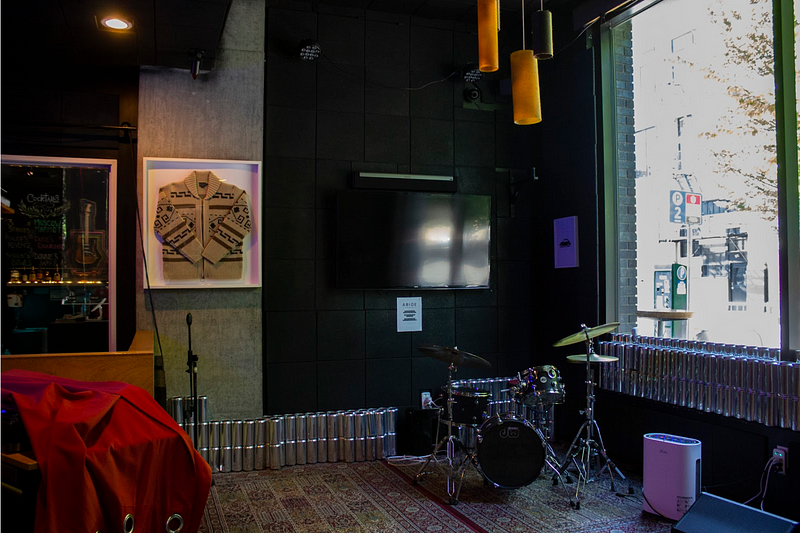
“They open up the windows here so we can play for an audience. They call it ‘Live in the Fishbowl.’”
Portland band Ben Said recorded their first jam session at Bathrobe Records, a bar and recording space. When Portland began to reopen, Bathrobe Records introduced live, partially-outdoor concerts, with audience members spaced six feet apart at bar tables on the sidewalk while bands perform inside the recording space through open windows.
According to Pierre Fuqua of Ben Said, the isolation of sound is the trickiest part of recording in home locations. The studio, however, makes that easy. He often records vocals in this studio for that exact reason.
Bathrobe Records bridges the gap between a public and a private recording space. As musicians consider what recording and performing might look like heading into 2021, versatile spaces like Bathrobe may become more common.
Howling West — North Seattle, Seattle, WA
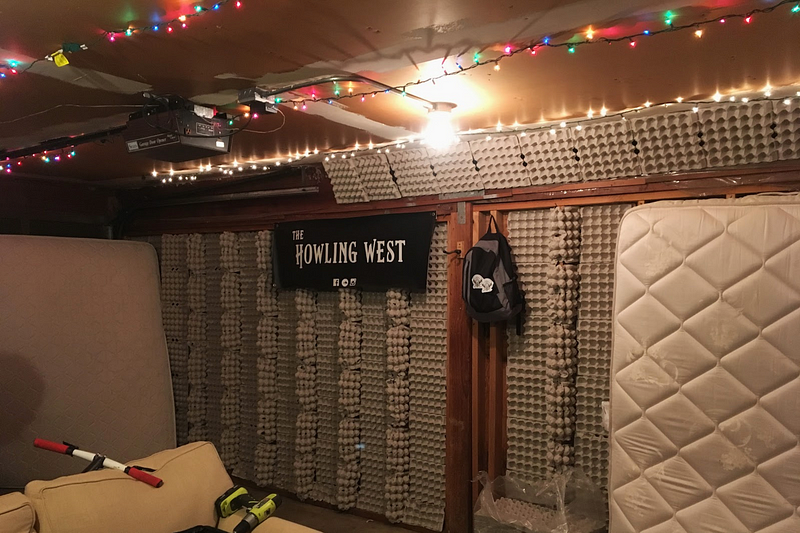
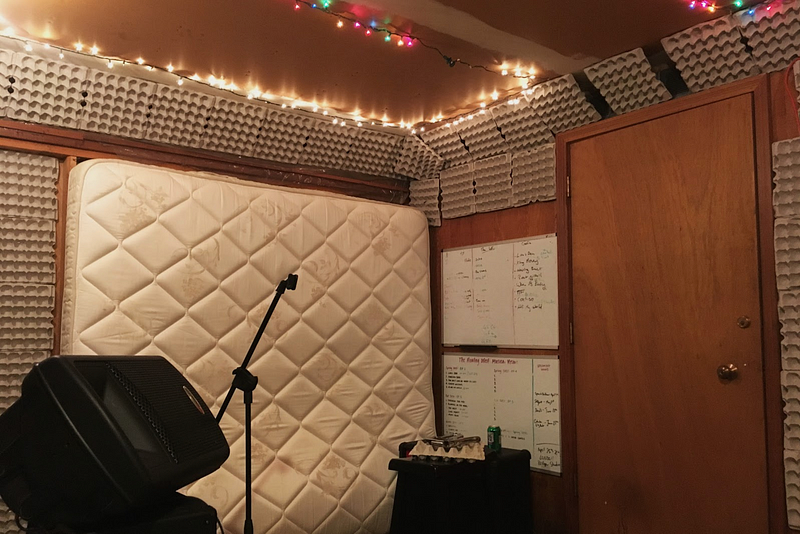
“Our primary goal was to eliminate any echos and make it a ‘dead room.’ It worked surprisingly well.”
Alex Gamble, guitarist and vocalist of Seattle band Howling West, built this DIY studio in his garage in North Seattle.
Gamble’s experience with live sound and radio meant that he approached the layout of his garage studio very technically. He planned the arrangement of each amp and microphone in meticulous schematics beforehand. Once the space was constructed, Gamble and his bandmates checked everything twice by recording audio outside the house to see how sound would travel and clapping in different parts of the space to check for echo.
The band used some carpeting and mattresses for bass-absorption, and a lot of egg cartons for diffusing sound in the space. They recorded their demo in the garage before recording their first EP in a professional studio. The band rehearses often and, according to Gamble, they haven’t heard any complaints from neighbors thus far.
Hi Crime — Northeast Seattle, Seattle, WA
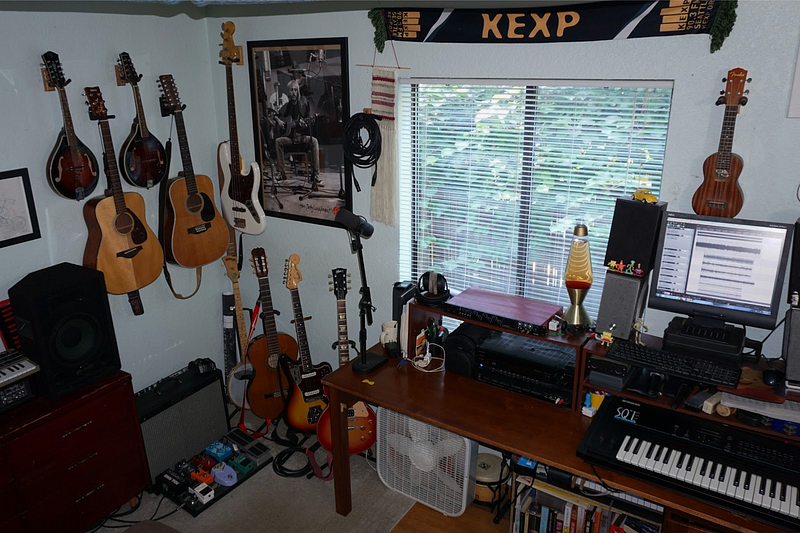
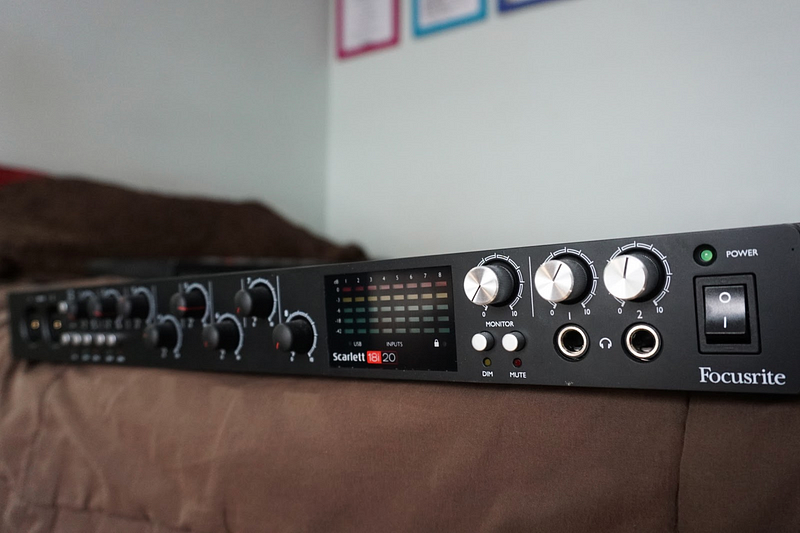
“We have the freedom to record as long as we want… time allows us to experiment and implement new ideas at a moment’s notice.”
Hi Crime is a Seattle-based indie-pop group that began as a recording project between songwriters Brielle Rutledge and Mitch Etter in 2015. They currently use a Focusrite interface to record from home.
For them, the biggest advantage to an at-home studio is time. In a normal studio setting, musicians rent the studio space for a given amount of hours and pay the engineer on top of that cost. Studio time isn’t cheap, so bands try to be as tightly rehearsed as possible before going in to record.
“When you do it yourself, you can take as long as you want,” Etter said. “We’ve spent half a day recording vocals before, only to realize we didn’t get the right vibe. So you throw them away and try again another day. That’s reckless and a waste of money in a studio setting.”
Big Hare Records — Roosevelt Neighborhood, Bellingham, WA
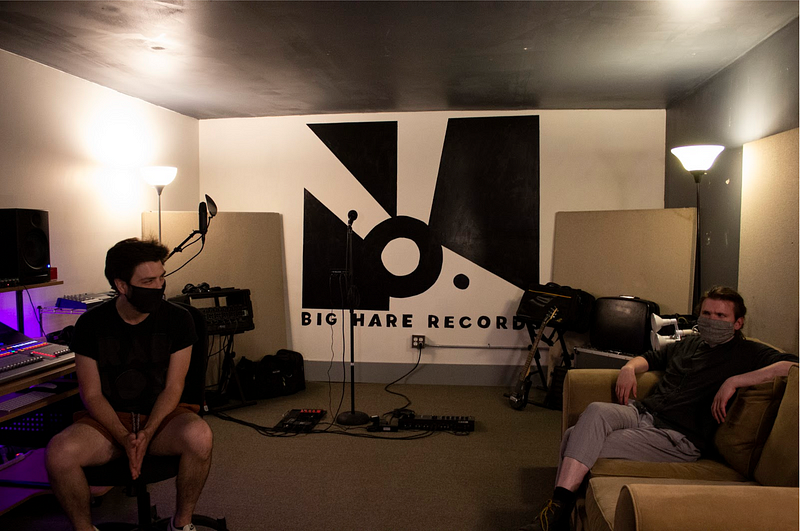
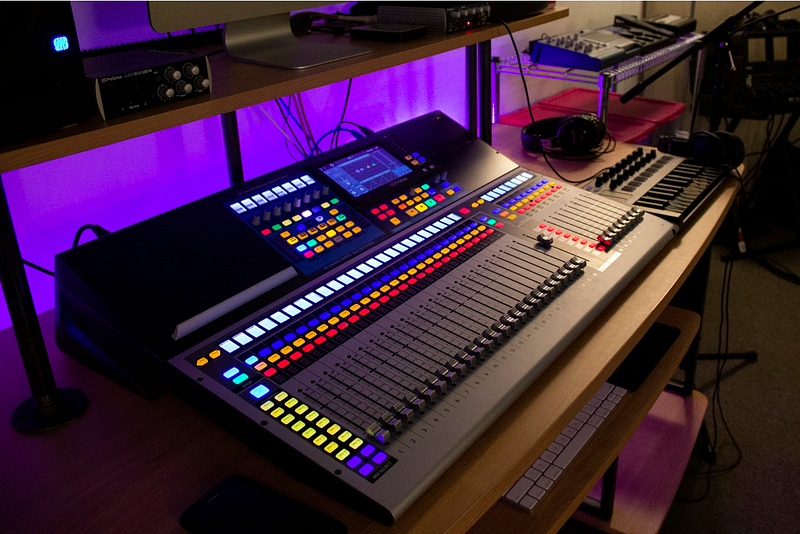
“It’s in our backyard, so whenever inspiration strikes… it’s right there.”
Joe Douglas primarily records electronic music and rock-adjacent music with electronic elements. He started Big Hare Records in 2018, and has put out seven releases since then. He and his wife built the studio in a shed in their backyard.
Douglas is always “future-proofing,” so his studio stays as up-to-date as possible. This means sometimes slogging through beta versions of software, or tolerating bugs in cutting edge equipment, but Douglas says it’s been worth it.
Editor’s note: On March 6, 2021, a correction was made to correctly attribute the engineer of Moose Almighty as drummer and audio engineer, Kevin Shoop.
